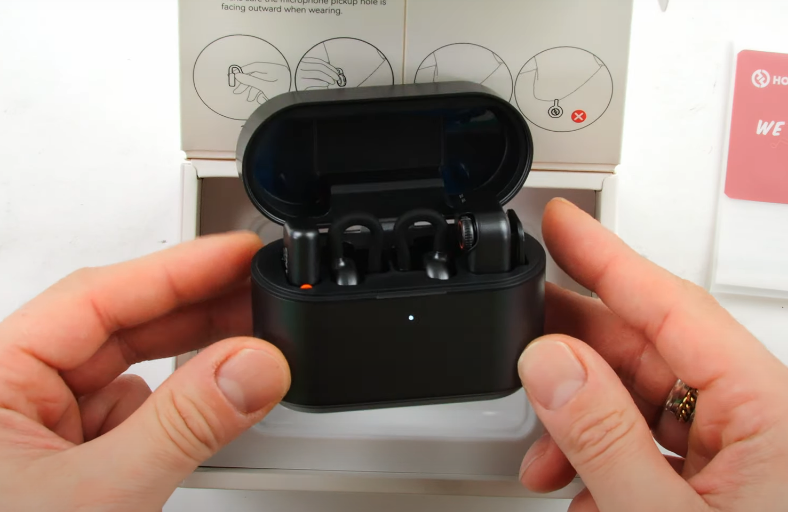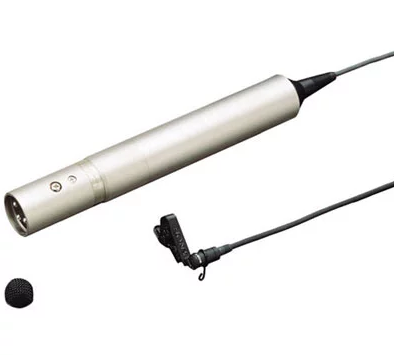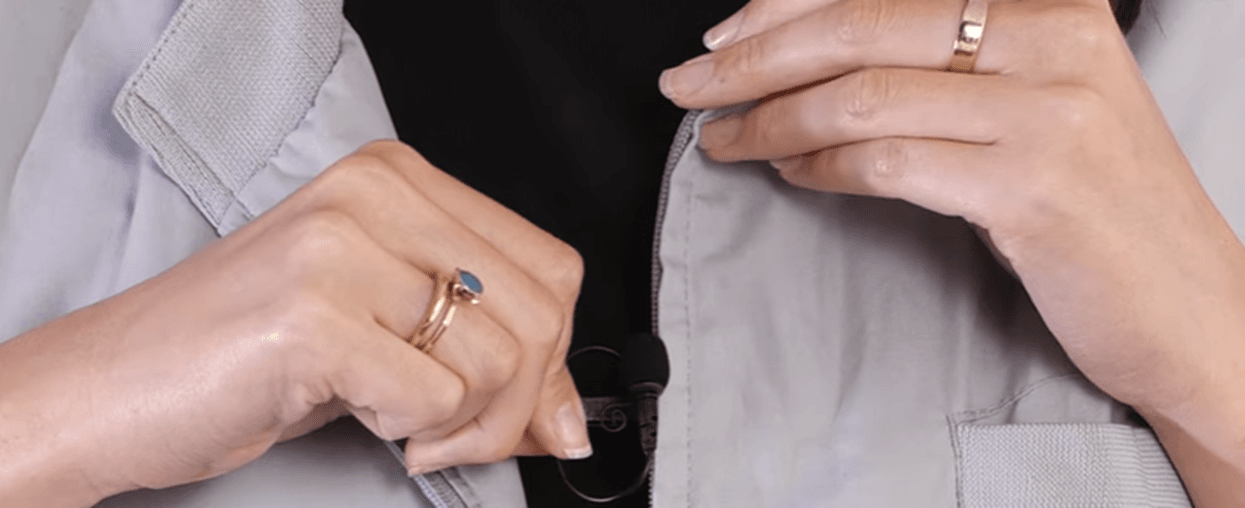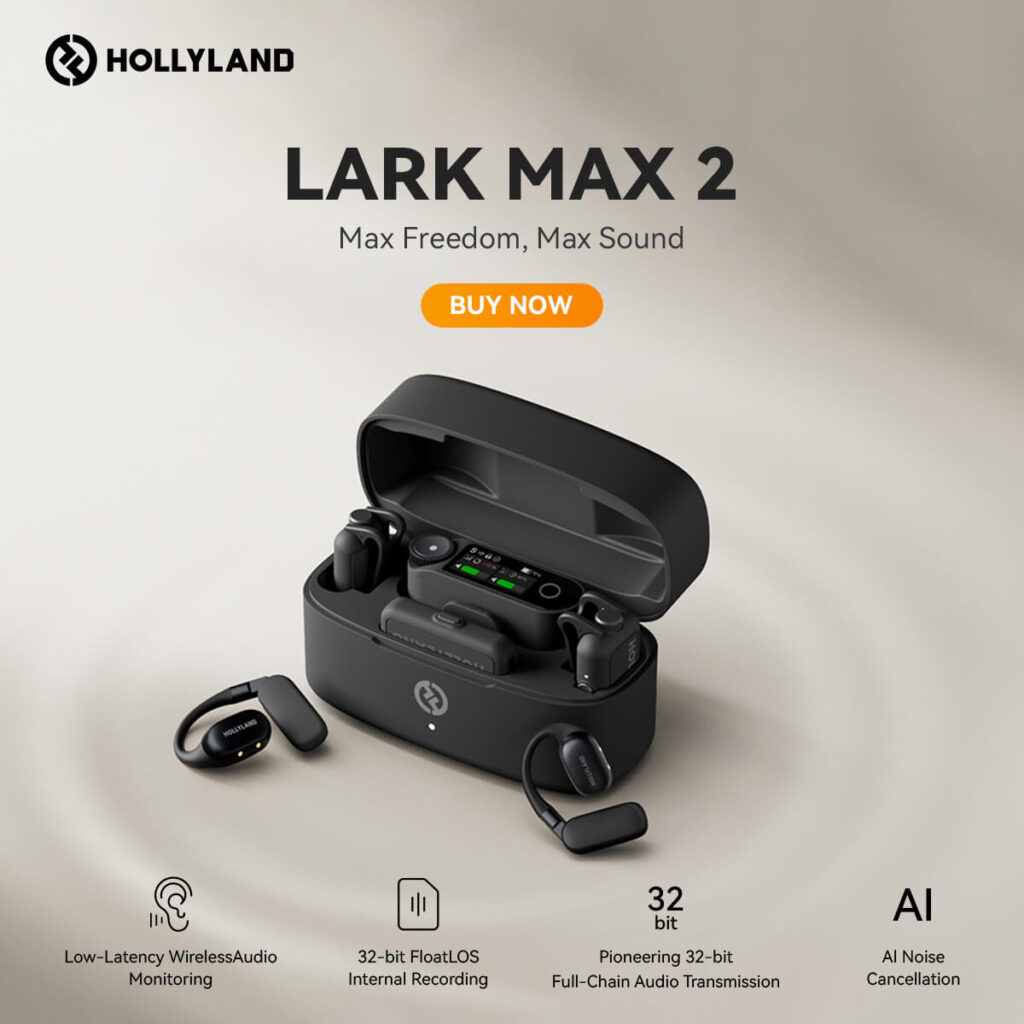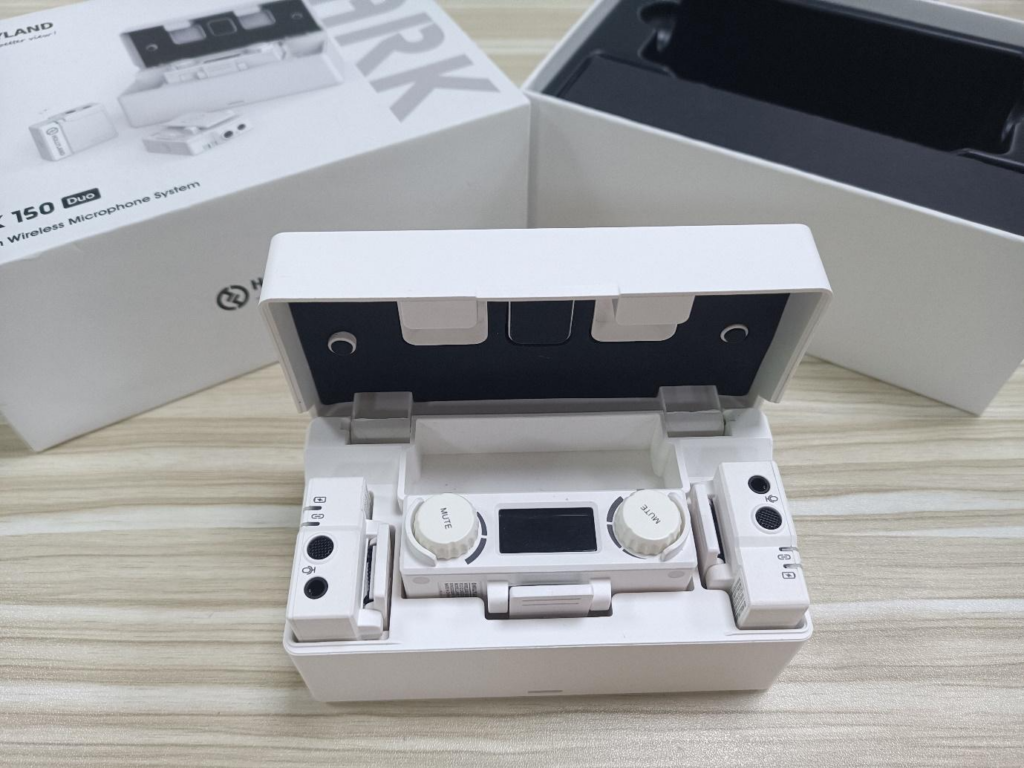
Hollyland Lark 150 is a wireless microphone system comprising two independent ultra-compact mics. It’s designed to record audio from two people in the frame – perfect where an interviewer is interviewing another person or in any other scenario with two protagonists.
As someone who does podcasts and has guests on their show or routinely shoots interviews in an external or internal environment, this lightweight yet powerful wireless microphone system will ensure that you don’t miss a word, ever.
Hollyland Lark 150 will suit any vlogger on the move, a podcaster who records on the go, or any street interviewer who needs a lightweight solution. But the real world uses goes much further than that.
Pros
Cons
- Extremely lightweight, weighing only 20.5 grams.
- Option to add additional six mics to expand the recording points.
- Automatically connects to an interference-free channel for an always-on connection.
- Auto pairing. Ready to use as soon as out of the charging box.
- Maximum transmission distance of 300+ feet.
- LED display on the receiver gives essential information.
- The Safe track system is very convenient when recording in dual-channel mode.
- Color indications for channel recording are very similar.
Specifications
- Ideal for two-person recording scenarios.
- Set of two Lavalier clip-on mics.
- Option to attach the Lavalier mics on a camera hot shoe.
- Windscreens enclosed.
- 3.5mm audio out and 3.5mm headphone out.
- Charging case with built-in rechargeable batteries for charging on the go.
- Four hours of battery life for the transmitter (in stereo mode).
- 7.5 hours of battery backup for the receiver.
- Three options – Safe, Mono, and Stereo along with a 2-way mute for the transmitters/mics.
- Option to pair additional six mics.
- Maximum transmitter range of 300 feet.
Hollyland Lark 150 price and availability
The Hollyland Lark 150 is available at a price of $279 for the 2-person wireless microphone system. This is a 2.4 GHz version. The system consists of two transmitters/mics and one receiver. The box comes with a number of items. There is a charging station, two transmitters, and one receiver. Additionally, the system comes with two lav mics, a connecting cable for your camera, a special cable for connecting a phone, regular mic windshield for the lav mics, and two tiny dead-cats (a contraption that wraps over the transmitters for canceling wind noise). A carrying pouch is also provided that ensures that you can pack everything together when traveling.
Unboxing and first impressions
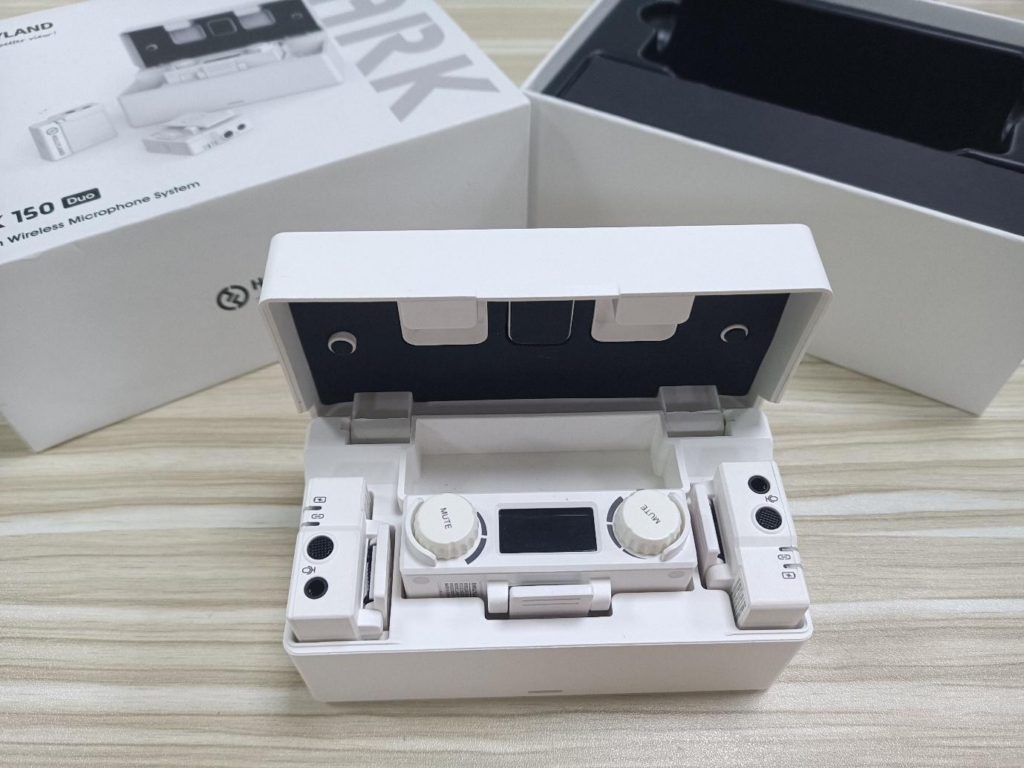
The devices inside are neatly packed and come in individual packaging. So, I have no qualms about the packaging part. The charging case is a bit and will take up some space inside your camera bag. The transmitters and receivers look very well designed. The transmitters are surprisingly light.
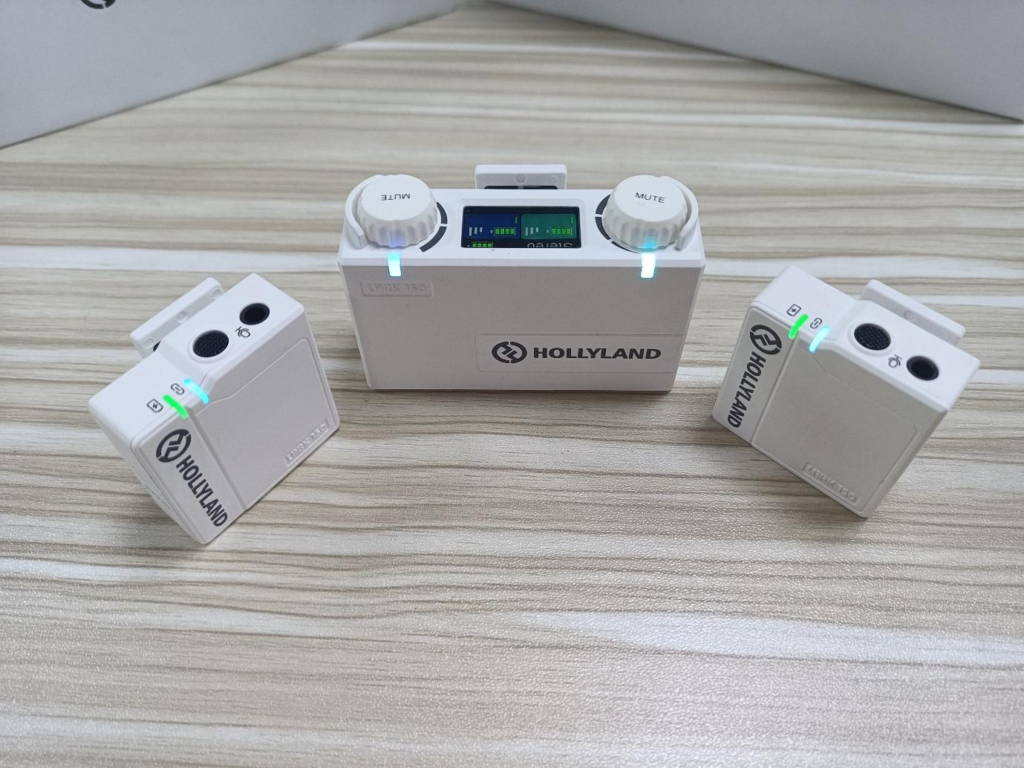
The receiver feels a bit bigger and impairs a part of the display on the top LCD screen when I place it on a small APS-C camera or a compact mirrorless camera. But when you wear it on your waist/belt, it feels quite compact and convenient.
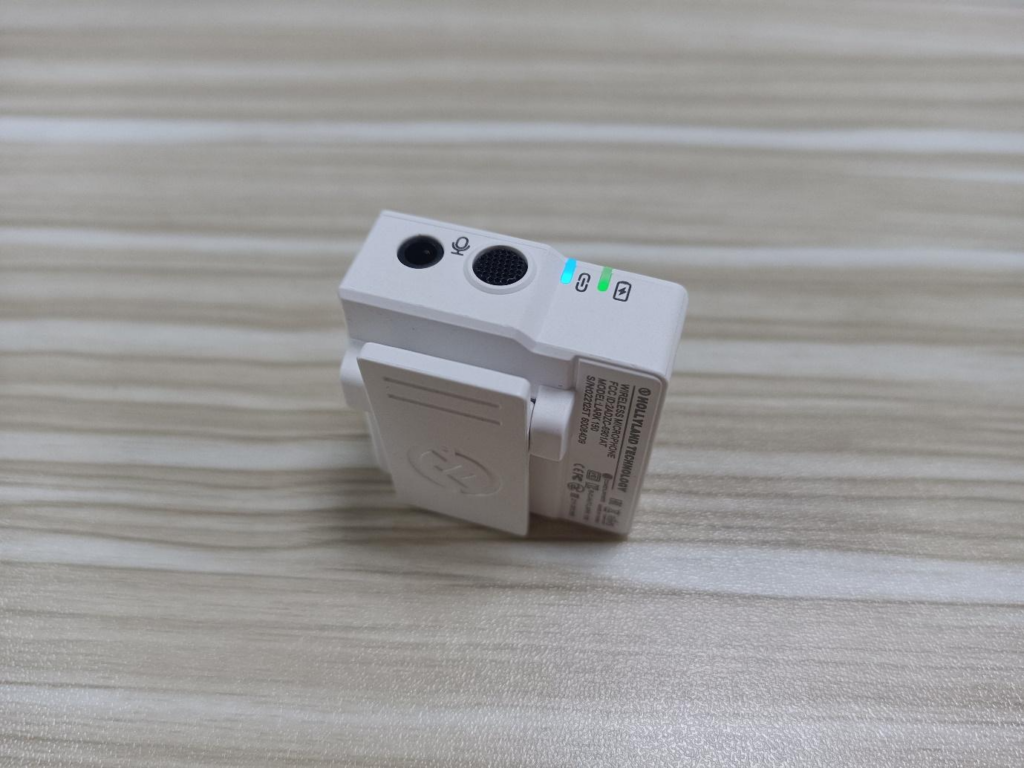
Another problem if you mount the receiver on a camera is that if the rear LCD screen flips upwards, it’s going to impair the view. For a one-man recording team, the flip screen is the only visible clue (unless an external display is used).
There is a USB-C charging port on the charging station. I really like that.
Read more: A Comprehensive Review of the Hollyland Lark C1 Wireless Microphone System
Build quality and design
The Hollyland Lark 150 is a great design. It’s sleek and functional. I love the hard plastic shell and the beautiful design that feels solid and reassuring.
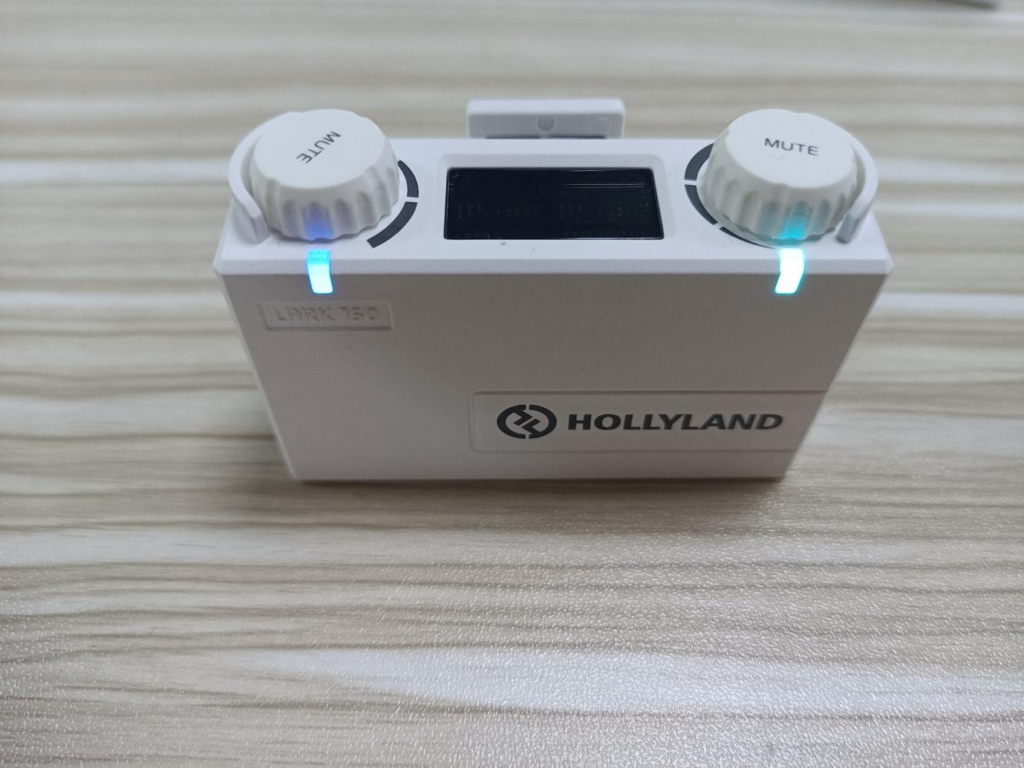
Do keep in mind that the plastic isn’t indestructible. The most vulnerable part of the system seems to be the clips. If you’re not careful when clipping the transmitter or the receiver on a belt or especially on a cold shoe, which can be a bit tricky, you can break the plastic clip.
The best thing about the Hollyland LARK 150’s design is that it’s ultra-portable. Weighing in at 20.5 grams and about the size of a coin, the transmitter is extremely portable and easy to wear. Think of it as a small piece of jewelry that just stays on your clothing without you ever realizing that it’s there.
Both the transmitters and the receivers have clips to attach them to your clothing. The clip on the receiver doubles up as a way to mount your receiver on a camera that comes with a hot (or cold shoe).
Do remember, though, the receiver does not connect with the electronics on a hot shoe. It is just a way to mount it to your camera. You still have to plug in a 3.5mm jack to connect your receiver to your camera.
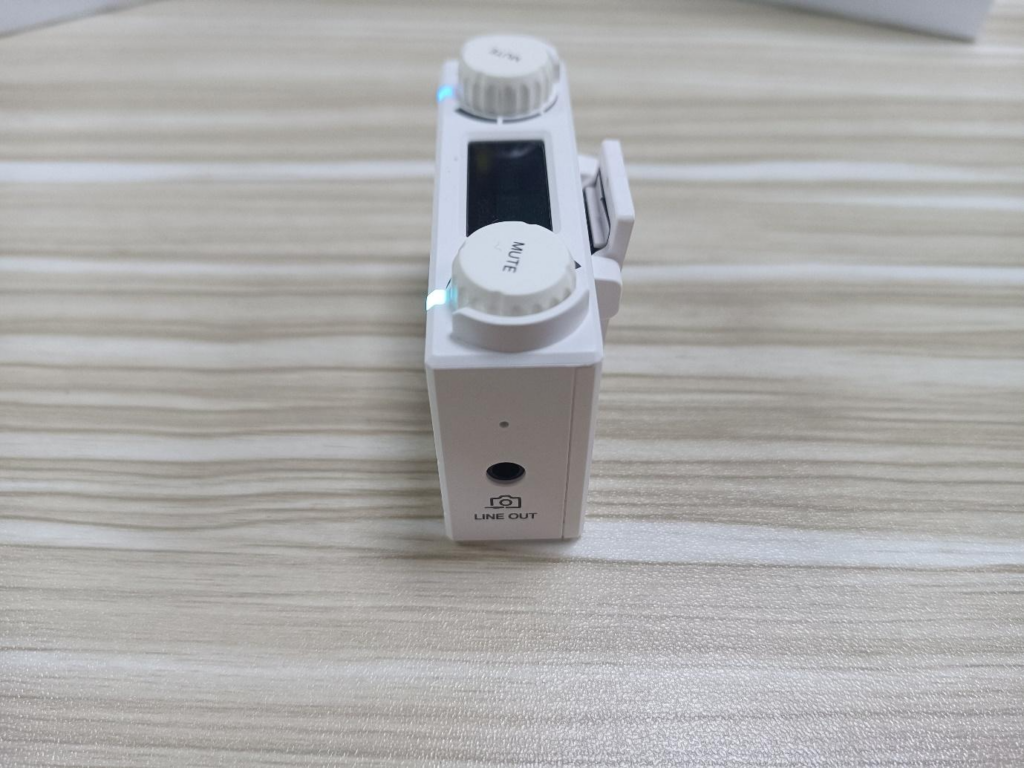
I love the fact that the transmitters have a button that you can use to mute or power off the device. A long press of the power button switches off the transmitter. A short press mutes it off. This is a fail-safe mechanism. The first option saves battery when you’re not recording, and the second one is for momentarily muting a transmitter when not needed.
Additionally, LED lights on the transmitter give you visual clues as to whether they’re muted or connected. This is extremely important because sometimes you could be recording without realizing the transmitter is muted.
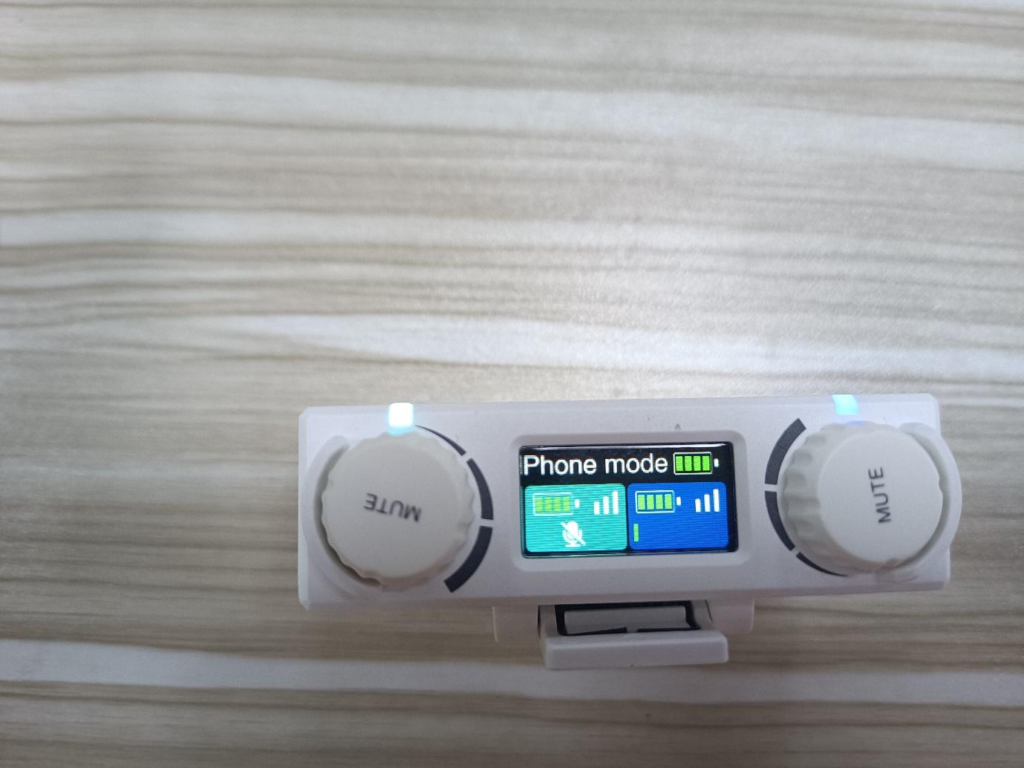
The LED lights also give you a confirmation when the transmitter is being charged.
The transmitter LED lights can also indicate if it’s recording on the left channel or the right one. One thing I noticed, however, was that when the transmitter was recording in the channel mode, the indicating lights were pretty much the same hue – blue for the left and cyan for the right. You can very well understand that it can be very confusing.
A lot of attention to detail has been given to the design and functionality of the Hollyland LARK 150. For example, the receiver has a small LED display. When the receiver is placed inside the charging dock, it displays the available battery level of the charging dock and the transmitters.
When the receiver is out of the charging dock, it immediately switches to information like signal strength, output level, and the recording modes being used currently, apart from the available battery status of the transmitters.
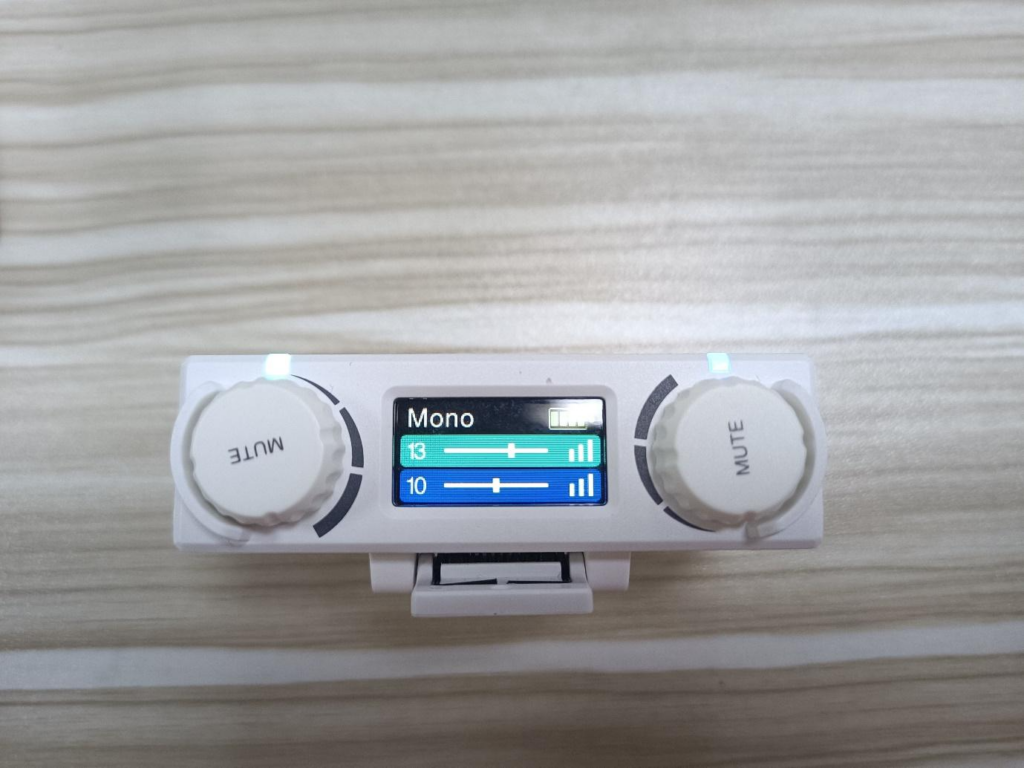
Still on the topic of the receiver. There are two functional buttons on it. They work like regular knobs and double up as buttons too. The purpose of these buttons/knobs is to control the transmitter levels, critical when you’re recording audio levels that tend to fluctuate (music, for example). You can also control which transmitter records which channel or what recording modes are used.
Set-up and use
Set-up is easy. Actually, you don’t have to spend any time setting up the transmitters and the receiver. Once they’re out of their charging station, they’re paired and ready to transmit.
The transmitters have a clip on them that allows you to attach them to your clothing. But there is an option to make it even more discreet for the camera.
Each transmitter comes with a 3.5mm audio port. You can plug in a Lavalier mic to this port and then attach the mic to your clothing.
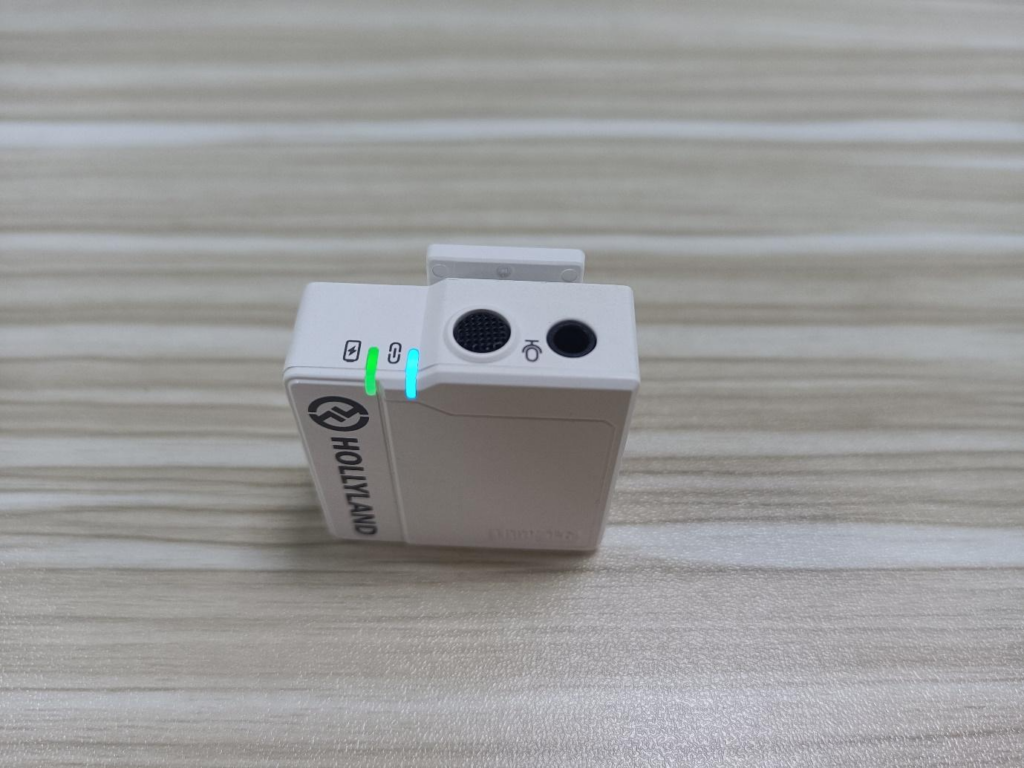
If you’re thinking that an additional lav mic will cost you some extra cash, don’t worry. Hollyland provides a set of lav mics that ensure that not only do you’ve to spend an extra amount of money, but you’re set the moment you unbox.
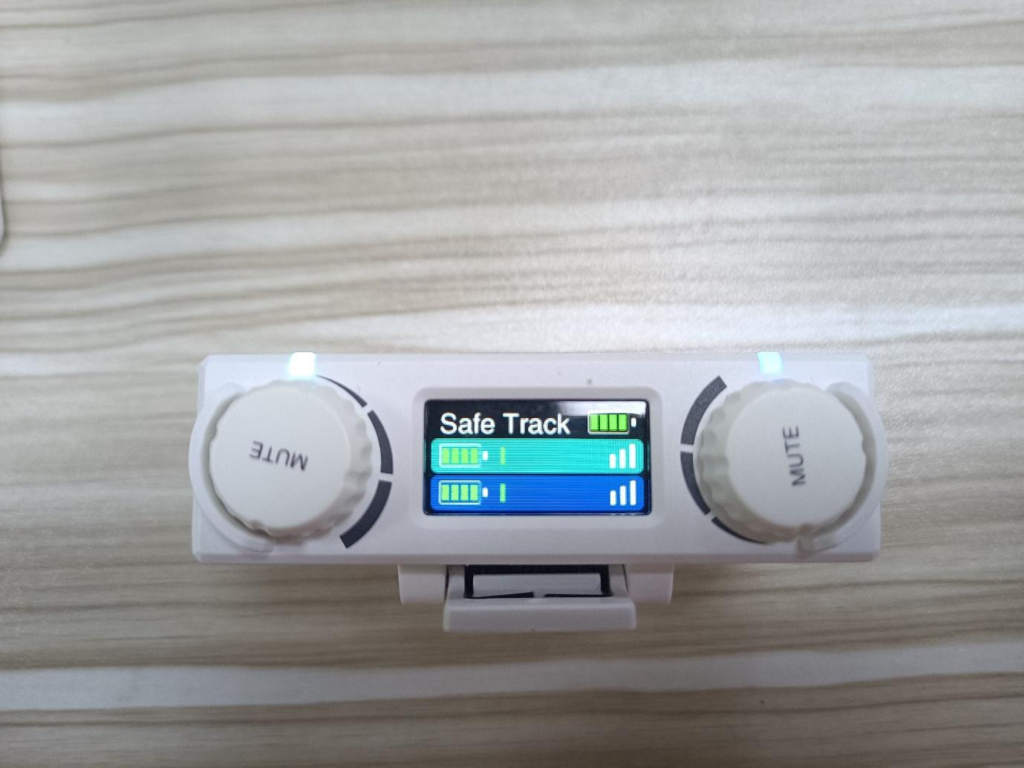
There are three recording modes on the Hollyland Lark 150. These are mono, stereo, and Safe track. The stereo track mode is the one you would want to buy this dual mic set-up. Stereo records the audio coming in from two different sources in a two-channel set-up.
The mono mode records all audio (from more than one source) and combines them into one channel.
I love the Safe track function of the transmitters when they’re working in dual-channel mode. Usually, when recording, the buttons on the receiver can be used to adjust the recording levels. But if a sudden burst of audio happens – someone breaks into a melody in the middle of an interview, or there is a sudden high-frequency audio, this option comes in handy.
Basically, the second transmitter records the same audio at a -6 dB level. This gives a backup track for you to fall back on in case the primary recording from the first transmitter crackles.
Performance and audio quality

The first thing that will grab your attention is that the Hollyland LARK 150 uses a 2.4GHz spectrum. The biggest drawback is this wireless spectrum is filled with signals from all kinds of wireless devices. You have signals from Bluetooth devices, security systems, and home routers (including dual-band ones) among a host of other devices using this spectrum. In an urban scenario, that means a lot of interference.
So, how does the Hollyland LARK 150 counter this problem?
The system comes with what is known as Frequency-Hopping Spread Spectrum (FHSS) technology. This allows the transmitter and the receiver to automatically scan and select the best possible frequency. This prevents any interference and results in clear audio quality at all times.
The devices have a working distance of more than 300 feet with a 5 ms latency. Hollyland states that the range is about 328 feet with a clear line of sight. Do note that when there is no clear line of sight, performance will drop, even if that disruption is caused by a human being standing in between.
Now about the all-important question about the audio quality of the Lark 150. I have tested the system using the provided lav mics, as well as third-party mics on a full-frame DSLR camera. I have also used an external sound recorder by plugging the receiver into it. My overall experience is very satisfying. The Lark 150 does a great job of picking up the sound signals and then transmitting them back to the receiver.
Battery life and charging
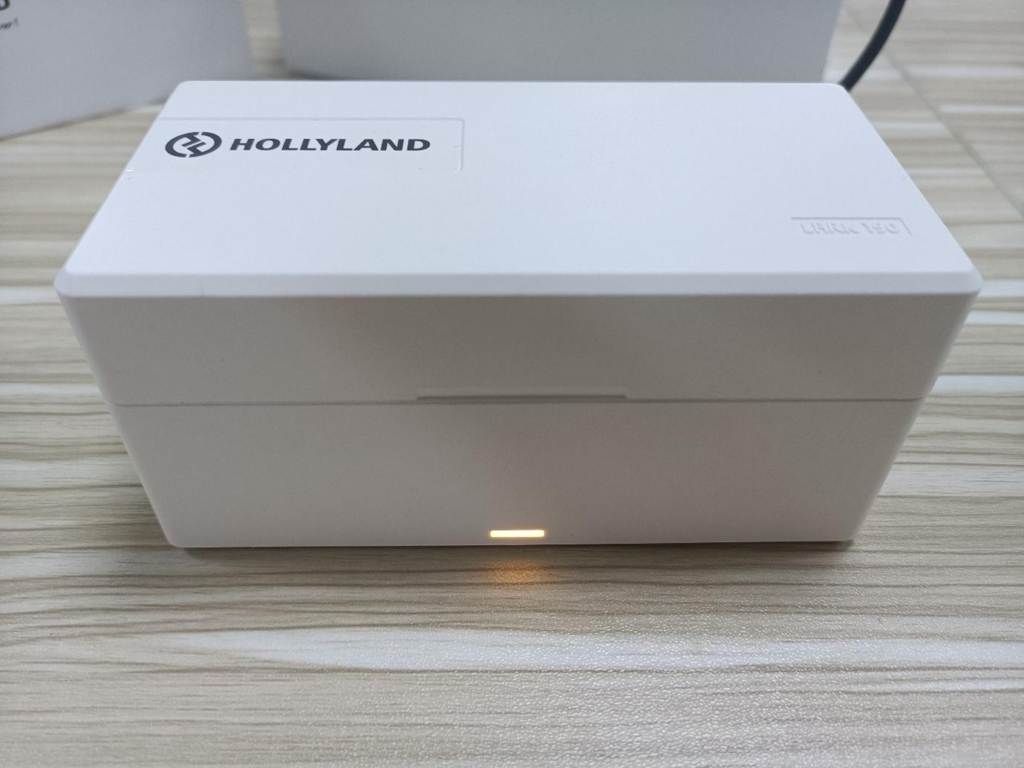
If you’ve used wireless earbuds, you will find some similarities here. The transmitters and receivers come enclosed in a storage box that also doubles up as a charging station for them. All you’ve to do is take the devices out, and they’re ready, all charged up and paired and ready to use. It does not get any more convenient than this.
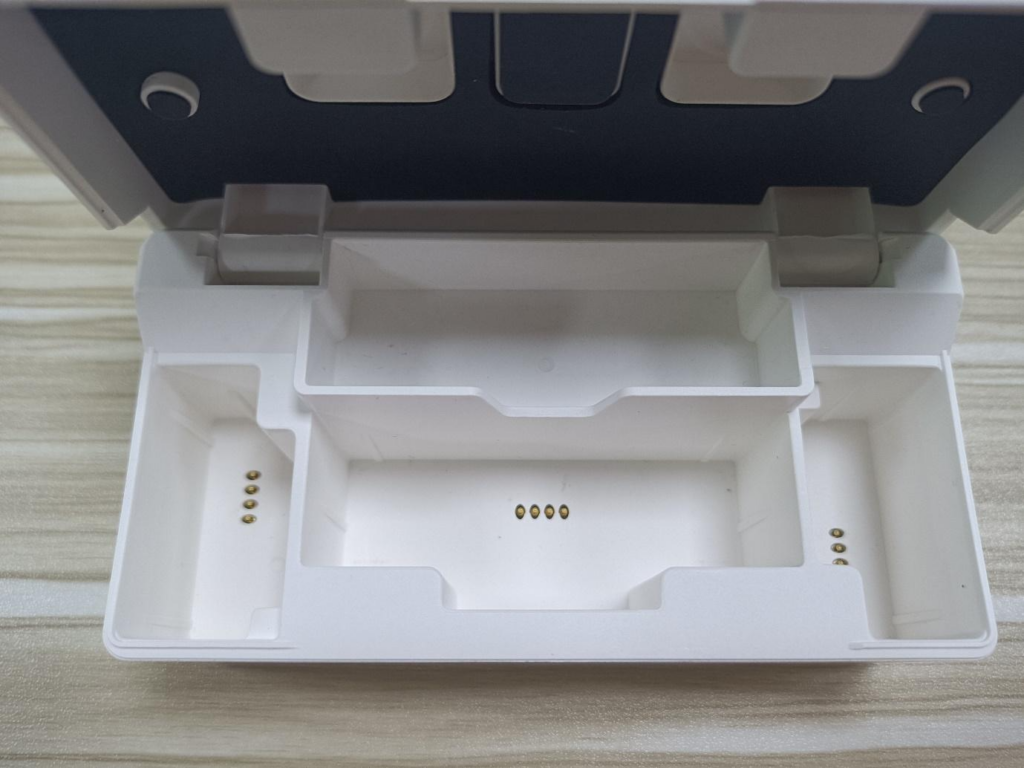
All you’ve to do is drop the transmitters and the receiver into the case, and because they’re magnetized, they’re pulled in and slotted perfectly.
The charging station comes with a built-in battery. When you’re traveling, that comes in handy as your devices get charged and are ready fully charged when you need them.
Hollyland states that a fully charged transmitter can last for up to 10 hours, which is a significant amount of time and should last you a day’s worth of recording. If you’re using both the transmitters/mics in tandem, you can squeeze in about 7 hours of recording time. However, I have seen that the actual time I can squeeze out of the system is more in the 4-5 hour range.
One major disadvantage of the built-in battery design is that you can’t swap batteries if you run out of juice in the middle of a shoot.
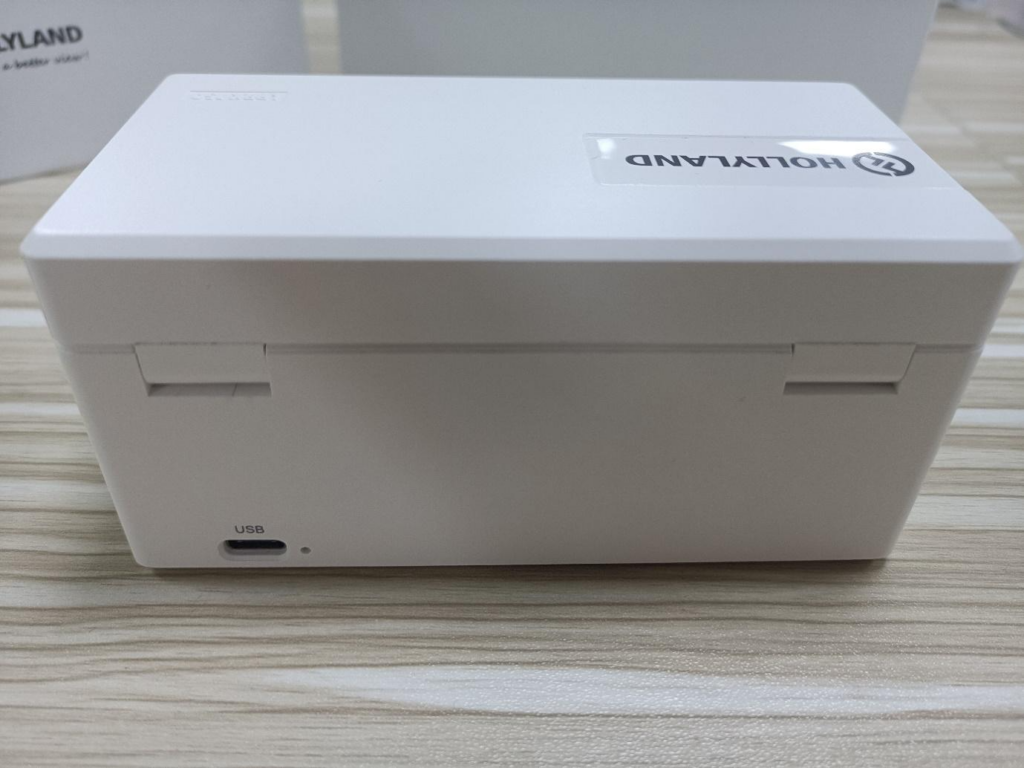
By the way, the charging station charges via a USB-C cable, which means it charges pretty fast. These days almost everything charges via a USB-C cable, which is a very thoughtful thing by Hollyland.
Read more: In-Depth Review: Hollyland Lark M1 Dual Channel Wireless Mic System
Conclusion
I feel any filmmaker, documentary maker, vlogger, or podcaster will find the Lark 150 to be an extremely useful tool for run-and-gun style shooting. The Lark 150 has a small footprint, packs neatly inside a small pouch, and is ready to use when you need them. There is no set-up needed at all.
Plus, the range is more than enough for most kinds of shoots, whether you’re sitting inside a studio interviewing a guest or running with the lead protagonist of your documentary with a camera strapped to your torso.
There are some drawbacks, though, such as the built-in battery that severely limits the ability of the Lark 150 to be used for a long day of the shoot. The battery life is much lower than what is promised. Also, the receiver can impair the view if you’re using a camera with an upward-flipping LCD screen. Also, I don’t like the fact that the LED colors that indicate the channel are very similar. But that’s about all the issues that I have about this system.
On the bright side, and beyond what I have already mentioned above, I love the convenience that comes with using this system, its sound quality, and the value that it brings on to the table.
Overall, if your current set-up is suitable to accommodate the Lark 150, you’re going to be more than happy with its results. It’s a beautiful, no-frills, easy-to-use wireless mic system that will boost your production value. It’s definitely worth the money.
If you’re exploring top-notch audio solutions for professional video production, the Hollyland Lark 150 wireless lavalier microphone might be just what you’re looking for. Let’s dive into a detailed review and see how this compact, reliable mic performs in 2023.
Best Seller
Sale
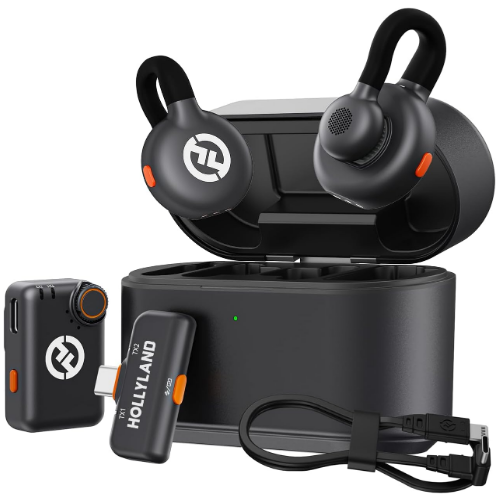
Hollyland LARK M2S – Wireless Clip-on Microphone
- 7g Lightweight, Titanium Clip, Discreet Design
- Clear sound with 24-bit/48kHz, 70dB SNR, 116dB SPL
- Noise Cancellation & 300m Long-Range Stability
- Works with Camera/iPhone/Android/Laptop
- Perfect for Content Creators, Online-Teaching, Streaming
$139
$159





























.png)


